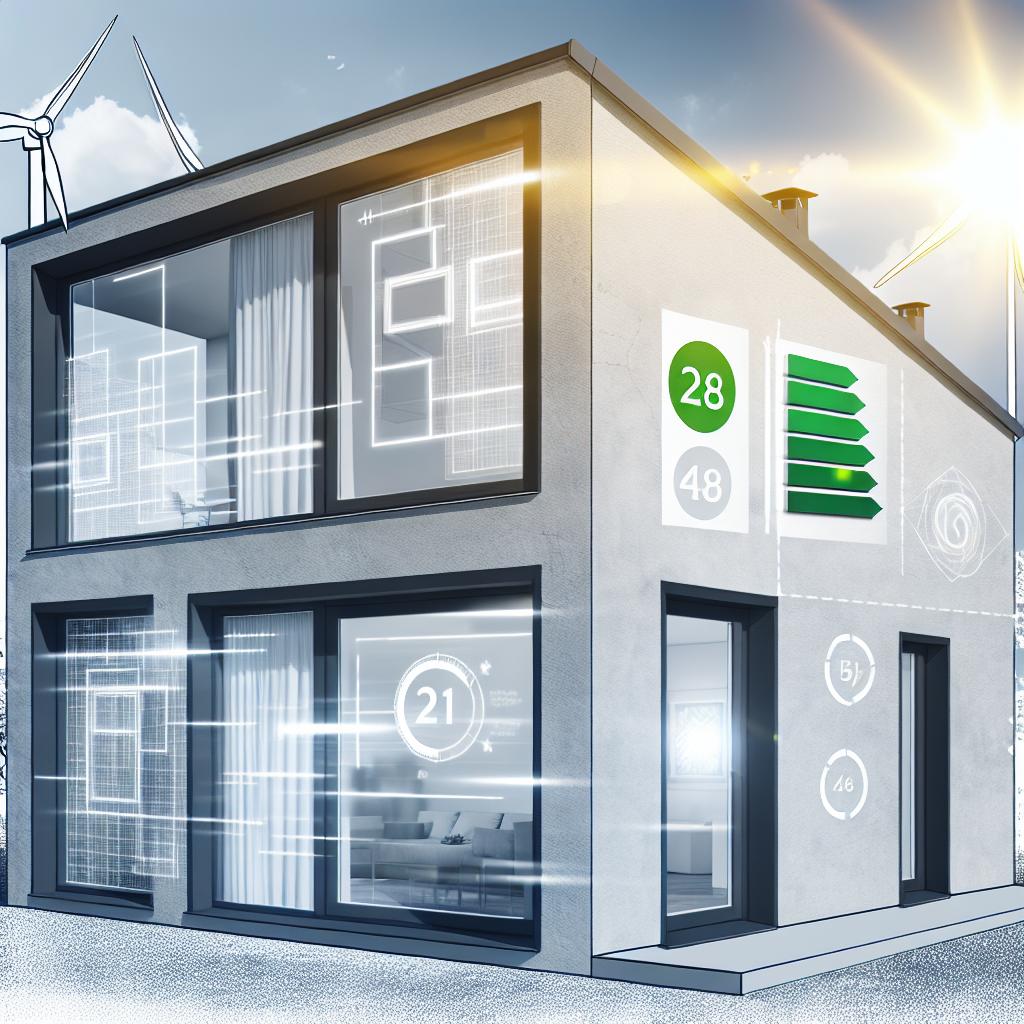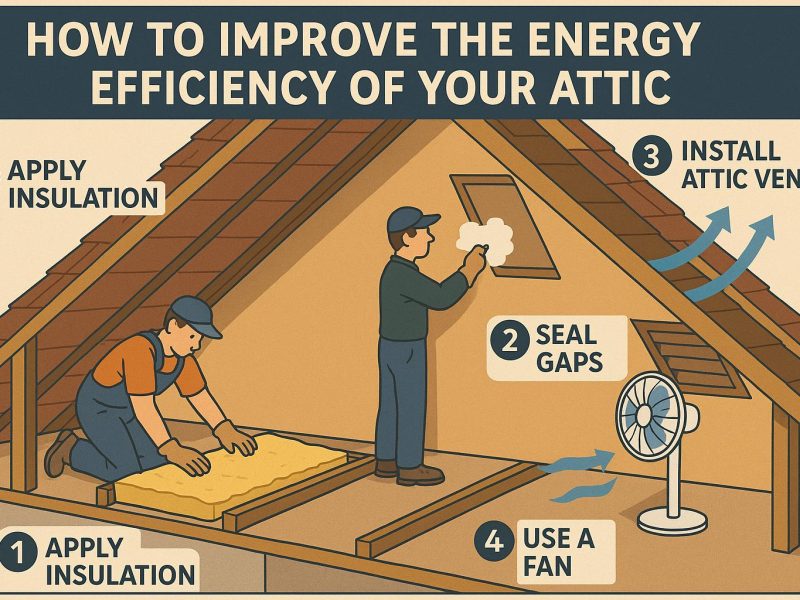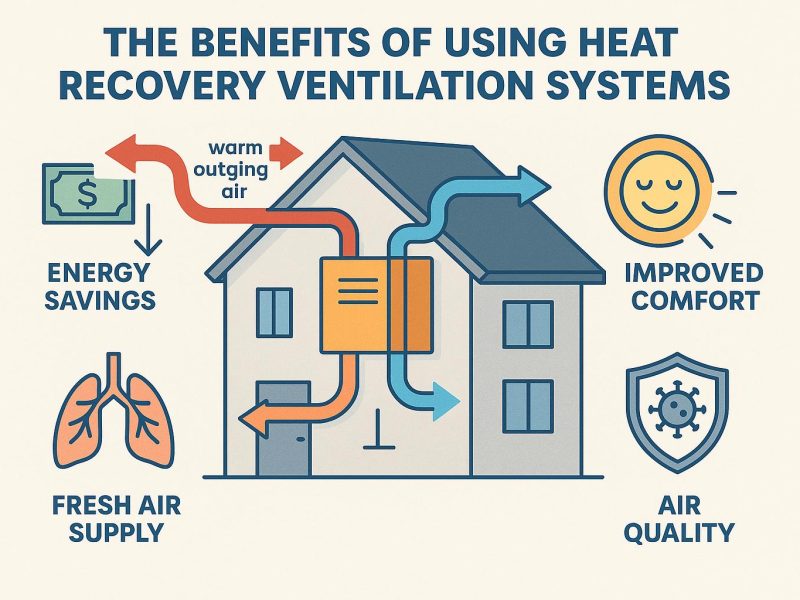Understanding Natural Ventilation
Natural ventilation is a fundamental element in the crafting of energy-efficient buildings. It capitalizes on natural forces to distribute air throughout a structure, reducing the dependence on mechanical ventilation systems. This not only improves the quality of indoor air but also plays a significant role in lowering energy consumption.
Principles of Natural Ventilation
At its core, natural ventilation relies on wind and thermal buoyancy to facilitate air movement. The creation of pressure differences due to wind flow across a building and temperature variations between the indoor and outdoor environments drive this process. Openings such as windows, vents, and louvers are pivotal in directing and controlling airflow.
Wind-Driven Ventilation
In wind-driven ventilation, external wind forces are harnessed to move air through and across the building. The placement of air inlets and outlets on the building’s facade is done strategically to manage airflow patterns and rates efficiently. Effective design takes into account prevailing wind directions and optimizes the building’s orientation and form to maximize ventilation.
Buoyancy-Driven Ventilation
Buoyancy-driven ventilation, often referred to as stack ventilation, utilizes temperature and density differences in air to encourage movement. In this method, warm air within the building rises and exits through high-level openings, allowing cooler air to enter through lower openings. This type of system is particularly effective in multi-story buildings where vertical air movement can be fully harnessed.
Benefits of Natural Ventilation
Natural ventilation offers several advantages over mechanical systems. One primary benefit is the reduction in reliance on HVAC systems, leading to decreased energy consumption and reduced carbon footprints. Additionally, it improves user comfort by providing fresher air and minimizing indoor pollutants, allergens, and moisture levels.
According to a study conducted by the U.S. Green Building Council, buildings that utilize natural ventilation techniques can achieve up to 30% energy savings compared to those that depend solely on mechanical ventilation. This substantial reduction in energy use makes natural ventilation an appealing choice for sustainable building design.
Challenges and Considerations
While natural ventilation brings numerous benefits, it also presents challenges. Its effectiveness is contingent upon the building’s location, climate, and design intricacies. For example, in regions experiencing extreme temperature fluctuations or high noise pollution, relying exclusively on natural ventilation might be challenging.
Furthermore, finding a balance between achieving adequate ventilation rates and ensuring comfort is often complex. Excessive airflow might cause discomfort due to drafts, whereas insufficient airflow could fail to refresh the indoor environment adequately. Consequently, hybrid systems that integrate both natural and mechanical elements are sometimes considered to address various conditions.
Design and Orientation Considerations
The effective implementation of natural ventilation hinges largely on thoughtful architectural design. The orientation of a building should be tailored to the region’s prevailing wind conditions to maximize natural airflow. Architectural features such as atriums, courtyards, and vents should be strategically placed and sized to facilitate air movement.
Materials used in construction also play a crucial role. For instance, thermal mass materials can be employed to stabilize indoor temperatures, storing heat during the day and releasing it at night. This thermal regulation is pivotal in buoyancy-driven ventilation systems, where the interaction between warm and cool air is essential.
Climate Influence on Ventilation Efficiency
Climate plays a determinant role in the success of natural ventilation. In tropical or temperate climates, where mild conditions prevail throughout much of the year, natural ventilation can be particularly effective. However, in colder climates, additional considerations must be taken to maintain comfort during winter. Here, the integration with mechanical systems or the utilization of passive solar heating techniques may be required to enhance effectiveness.
Conversely, in hot, arid regions, managing solar gains and maintaining air quality can pose additional challenges. Shading devices and evaporative cooling strategies may need to be incorporated to complement natural ventilation efforts.
Health and Comfort Implications
Beyond the environmental impact, natural ventilation has substantial implications for occupant health and comfort. By enhancing indoor air quality, it reduces exposure to indoor pollutants, including carbon dioxide and volatile organic compounds. Moreover, the constant renewal of air diminishes the presence of mold and humidity, creating healthier living and working environments.
Natural ventilation also ensures a connection with the outdoor environment, which can have positive psychological effects. Access to fresh air and natural light is linked with improved mood, productivity, and overall well-being.
Conclusion
Incorporating natural ventilation into building design offers a sustainable path towards energy efficiency. By decreasing reliance on mechanical systems, enhancing indoor air quality, and providing thermal comfort, natural ventilation stands as a cornerstone of modern environmentally conscious architecture. As advances in technology continue, exploring innovative solutions and design strategies becomes imperative to harness the full potential of natural ventilation across diverse environmental contexts. Through a nuanced understanding of design principles, climatic conditions, and material selection, architects and engineers can optimize buildings that meet contemporary sustainability goals while prioritizing occupant health and comfort.



